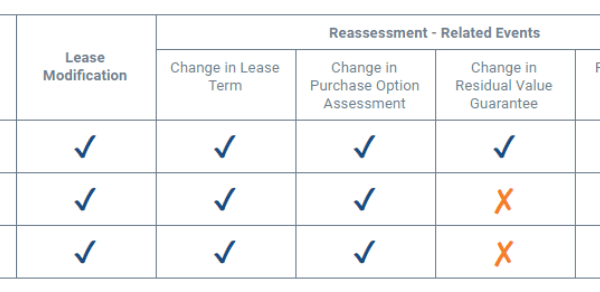Author: Buildout This post originally appeared on Buildout’s Blog and is republished with permission. Find out how to blog with us on theBrokerList.

Almost every broker uses commercial real estate models on a daily basis. It’s a crucial aspect of the job. But if you’re just starting out in the CRE industry, finding complete information about CRE models from start to finish can be a challenge. So, we put together this guide featuring two CRE models—CRE financial modeling and CRE valuation modeling—and the different deal types associated with each.
CRE financial modeling
In real estate financial modeling, you can analyze a property from the perspective of an equity investor (owner) or debt investor (lender) to determine the risks and potential returns.
For example, if you acquire an apartment building for $50 million and hold it for five years, what would the annualized return on your investment be? If you identify the most critical assumptions and set up your analysis correctly, real estate financial modeling can help you answer that question. A simple model can’t tell you about a specific figure for annualized return, but a decent analysis can tell you if a specific range of returns is plausible.
DYK: Every brokerage has its structure for financial models, but with Buildout Grids, you can take your existing financial models and spreadsheet data and seamlessly integrate it into the Buildout platform.
There are three common deal types that call for financial modeling—acquisition, renovation, and development. Let’s take a look at each type.
1. CRE acquisition modeling
The primary strategy for acquisition modeling is to acquire an existing property, change little to nothing, and then sell it. First, brokers analyze the size of the property. Then, they make assumptions for acquisition price, exit price, and loan-to-value ratio. In real estate financial modeling, property valuation is based on the net operating income (NOI) divided by a cap rate or range of cap rates—they represent the property’s location, quality, and overall desirability.
Next, brokers make key assumptions about the property, including the rent per unit/square foot, parking income, utility reimbursements and concessions, and expenses. (This is where comp data plays a critical role.) Based on these assumptions, the broker can then create a real estate pro-forma. The next step is to calculate the returns on an unleveraged basis and a leveraged basis. You need both types to assess how much leverage you have in the deal. The last step is to make an investment decision.
2. CRE renovation modeling
In renovation modeling, the strategy is to acquire an existing property, change it significantly, and then sell it. It’s similar to acquisition modeling, and the steps in each process closely match, as well. The main difference with renovation modeling is that the owners invest capital to upgrade the property during the holding period, in the hopes of boosting the property value or occupancy rate.
These upgrades mean you must take several additional factors into account, including
- Renovation costs
- Penalty during the renovation period
- Benefit following the renovation
- Permanent loan refinancing
- Exit assumptions
3. CRE development modeling
This deal type is different from the first two as the strategy for development modeling is to buy land, pay to build a new property, find tenants, and then sell it upon stabilization. A developer facilitates the creation of a property from the ground up, and funds it with both debt and equity—with equity contributed first. (Lenders will only sign deals once the investors/owners/developers have contributed sufficient equity to pay the initial costs.)
The steps in a development model, like operating assumptions, pro-forma, and returns calculations, are similar to the models above. The key difference is that land and construction costs determine the purchase price, not cap rates and NOI. Developers also raise funds through debt and equity over time, rather than all at once, and construction can take years to complete.
CRE valuation models
As a commercial real estate professional, the driving factor in your decision to pursue a deal is the return on investment or the perceived profit that it can bring. The valuation models you’ll use to make that determination depend on the type of property.
DYK: Buildout Grids can save you countless hours in each deal valuation by allowing automated, integrated underwriting capabilities—this means more time spent on winning and closing business.
There are three commercially recognized valuation models—income approach, sales comparison approach, and cost approach—that can give you the best idea of what the property you’re analyzing is worth. Let’s take a look at each approach.
1. Income approach
This valuation model is the primary method to appraise income-producing properties like apartments, office buildings, and retail centers. Though this model is the most complex, it’s considered the most valuable and accurate gauge of CRE property value. The first step in using the income approach is to determine a property’s NOI, or the revenue it generates minus the necessary operating expenses.
The process for calculating a pro-forma or NOI is known as a cash-flow projection. It’s used to determine value based on common investment ratios and eventually a discounted cash-flow analysis. After an NOI assessment, brokers evaluate similar-earning properties to work out the market value. The last step is to determine a value estimate by dividing the property’s NOI by its cap rate.
2. Sales comparison approach
The sales comparison approach, also known as the market data approach, is a way to discover market value by comparing a property to other properties with similar characteristics. Brokers use this model when conventional financing is sought-after.
The appraisal process analyzes three or four comparable properties. That result reflects the idea that a property is worth the net value of all of its features. Accurately determining similar properties and accounting for differences requires extensive research, knowledge of an area, and industry experience.
3. Cost approach
This valuation model considers the cost to build the property and deems it equal to the value that an investor should pay. The cost approach assumes that a reasonable buyer would not pay more for an existing property than it would cost to buy a comparable lot and construct a new building. It’s useful when dealing with infrequently sold properties that do not produce income—schools, churches, hospitals, and government buildings.
For appraisal purposes, value depreciation takes into consideration physical deterioration, design features that are no longer in trend, and economic degeneration. It’s the least-used valuation model but requires an in-depth knowledge of construction and material costs.
Looking for an easier way to manage commercial real estate underwriting?
These CRE models are the foundation of every deal, so getting them right is crucial. But that doesn’t mean you need to spend hours creating models and marketing collateral from scratch. Buildout Grids combines the familiar user experience of popular spreadsheet tools with a seamless integration to the Buildout platform, empowering more strategic decision-making and increasing deal velocity. You can even take advantage of proven underwriting models available out of the box.
Request a demo to see how Buildout Grids can simplify commercial real estate underwriting at your brokerage.
For more updates like this, future coverage of tools in the CRE industry, and other brokerage insights, subscribe to our blog.



